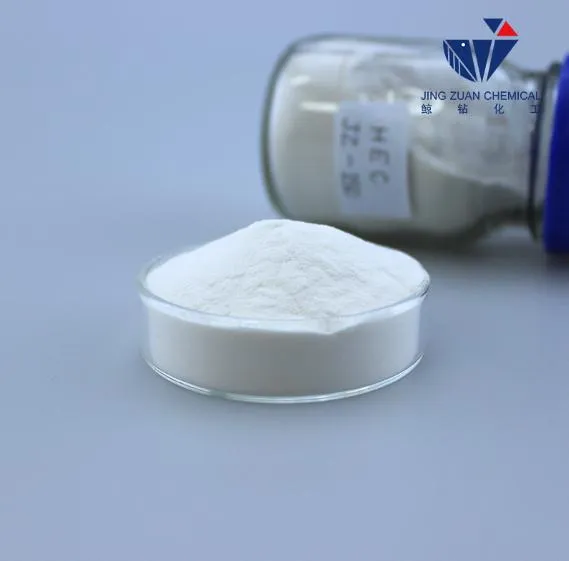
kol . 05, 2025 10:58 Povratak na popis
Why HPMC is a Key Additive in Wall Putty Formulations
Wall putty transforms rough surfaces into flawless canvases for painting, yet its performance hinges on specialized additives. Hydroxyprop methyl cellulose (HPMC) stands out as an irreplaceable component in modern formulations. This water-soluble polymer, derived from cellulose, revolutionizes putty by enhancing binding strength and water retention. Factories like Jingzuan Chemical Technology—a Shijiazhuang-based manufacturer with 15+ years of expertise in Hydroxyprop methyl cellulose powder production—supply high-grade HPMC globally. By optimizing rheology and durability, HPMC enables putty to adhere seamlessly to walls, resist cracking, and withstand environmental stressors. Let’s explore how this unsung hero elevates construction materials.

Hydroxyprop methyl cellulose: The Ultimate Binder for Wall Putty
Binding is the cornerstone of effective wall putty, and Hydroxyprop methyl cellulose excels as a molecular "glue." When mixed into putty, HPMC’s long-chain polymers entangle with cement particles and fillers like calcium carbonate, creating a cohesive matrix. This binding action prevents aggregate segregation during application and curing. Unlike inferior binders, HPMC’s high viscosity range (400–200,000 mPa.s) ensures uniform thickness without clumping. The polymer’s Hydroxyprop methyl cellulose groups form hydrogen bonds with water molecules, stabilizing the mixture while allowing smooth spreading. Builders benefit from HPMC’s ability to enhance adhesion to diverse surfaces—concrete, plaster, or brick—minimizing delamination risks. Additionally, HPMC’s gel temperature (62–70°C) guarantees performance stability in hot climates, preventing premature drying. Jingzuan’s rigorous quality control ensures low moisture (≤5%) and ash residue (≤5%), eliminating impurities that weaken binding.
Water Retention Mastery with Hydroxyprop methyl cellulose Powder
Water retention is non-negotiable for crack-free putty, and Hydroxyprop methyl cellulose powder delivers unparalleled hydration control. When added to dry mixes, HPMC particles rapidly absorb water, swelling to form a colloidal gel that locks moisture within the putty matrix. This slow-release mechanism extends workability from minutes to hours, allowing builders to rectify imperfections without rushing. Crucially, HPMC prevents rapid water evaporation—a common cause of shrinkage cracks—by creating a microscopic barrier that regulates moisture diffusion. The powder’s solubility in cold water ensures effortless integration during manufacturing, while its molecular structure (C3H7O) optimizes fluid dynamics for consistent viscosity. For end-users, this translates to effortless application: putty remains pliable under the trowel yet cures evenly. In humid conditions, HPMC’s moisture-balancing act prevents blistering; in arid zones, it combits brittleness. Factories near logistical hubs like Shijiazhuang (300km from Beijing/Tianjin port) streamline access to this transformative powder.
Hydroxyethyl Cellulose: Enhancing Durability and Workability
Beyond binding and hydration, Hydroxypropyl methyl cellulose elevates putty performance through multifunctional synergy. As a rheology modifier, HPMC imparts thixotropic behavior—putty thickens at rest (preventing sag on vertical surfaces) but shears thinly during application. This "self-leveling" quality eliminates roller marks and reduces labor. HPMC also acts as a protective colloid, shielding putty from microbial degradation and pH fluctuations (critical in cement-rich formulations). Its film-forming capability seals pores, boosting water resistance and paint adhesion post-curing. For eco-conscious projects, HPMC’s plant-based origin and low-toxicity align with green-building standards. Builders report smoother finishes, reduced wastage, and 30% fewer callbacks for repairs—proof of HPMC’s ROI.
|
HEC Parameter |
Value Range |
Impact on Putty Performance |
|
Viscosity |
50,000–100,000 mPa.s |
Ensures uniform thickness and anti-sag properties |
|
Moisture Content |
≤5% |
Prevents clumping and maintains powder flowability |
|
Ash Residue |
≤5% |
Reduces impurities that weaken binding |
|
Gel Temperature |
62–70°C |
Stabilizes performance in high-heat environments |
Sourcing Reliable Hydroxypropyl methyl cellulose for Sale
Quality HPMC begins at the source, and reputable factories like Jingzuan Chemical Technology set industry benchmarks. Located in Shijiazhuang—a chemical manufacturing hub—Jingzuan leverages proximity to raw materials and ports to deliver Hydroxypropyl methyl cellulose for sale with uncompromised quality. Their 15-year specialization in HPMC, HEC, HEMC, and RDP ensures technical expertise in polymer refinement. Production adheres to ISO standards: cellulose ethers undergo etherification, purification, and micronization to achieve precise viscosity grades and solubility. Batch testing guarantees parameters like moisture, ash, and gel temperature meet construction-grade specs. For global buyers, Jingzuan’s export-ready packaging (25kg moisture-proof bags) and logistics support streamline procurement. Whether for large putty manufacturers or niche formulators, their HPMC empowers innovation while cutting production costs.
Elevate your putty formulations today! Visit Jingzuan Chemical Technology’s website to explore premium Hydroxypropyl methyl cellulose powder solutions tailored for durability, ease of use, and profitability.
Why HPMC is a Key Additive in Wall Putty Formulations: FAQs
Why does Hydroxypropyl methyl cellulose powder prevent wall putty from cracking?
HPMC powder acts as a moisture regulator, slowing water evaporation during curing. This controlled hydration minimizes shrinkage stress, eliminating micro-cracks that compromise wall integrity.
How does Hydroxypropyl methyl cellulose improve DIY wall putty application?
HPMC creates a smooth, gel-like consistency that spreads evenly under a trowel. Its anti-sag properties allow thicker application on ceilings or corners without drips, making it user-friendly for non-professionals.
Can Hydroxypropyl methyl cellulose for sale work in humid climates?
Absolutely. HPMC’s moisture-balancing ability prevents putty from absorbing ambient humidity, reducing blistering or softening issues in tropical environments.
Is Hydroxypropyl methyl cellulose eco-friendly for home renovations?
Yes. Derived from plant cellulose, HPMC is non-toxic and biodegradable. It emits no volatile organic compounds (VOCs), ensuring safer indoor air quality during and after application.
Why choose factory-direct Hydroxypropyl methyl cellulose powder for putty?
Direct sourcing ensures consistent quality, technical support, and traceability. Factories like Jingzuan provide tailored viscosity grades to match specific formulation needs, avoiding performance inconsistencies.
-
Why HPMC is a Key Additive in Wall Putty Formulations
VijestiAug.05,2025
-
Redispersible Powder in Decorative Renders: Function Meets Finish
VijestiAug.05,2025
-
Redispersible Powder for Interior Wall Putty: Smooth Results Every Time
VijestiAug.05,2025
-
HPMC’s Water Retention Capacity in Dry Mortar Applications
VijestiAug.05,2025
-
HPMC Factory Contributions to Liquid Detergents
VijestiAug.05,2025
-
How HPMC Factory Products Change Detergent Textures
VijestiAug.05,2025







